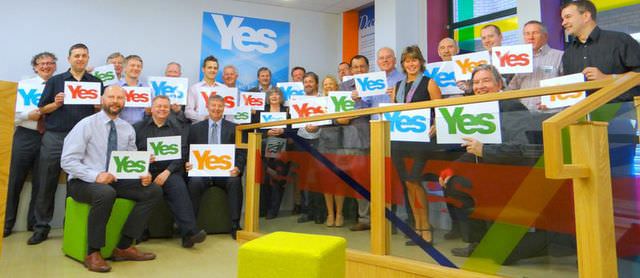BESIDES the EU and immigration, if there's one other that seems to make Ukip mad it's windfarms.
Nigel Farage is forever railing against turbines, damning them as ugly, unwanted and a costly waste.
Nigel Farage is forever railing against turbines, damning them as ugly, unwanted and a costly waste.
So it will no doubt come as a surprise to the Ukip leader to learn today that his own economic spokesman is doing rather nicely from windfarm deals for his Scottish estates.
Here's a longer version of the story in today's Sunday Herald.
EXCLUSIVE
Tom Gordon
Scottish Political Editor
A LEADING member of Ukip has been accused of hypocrisy after striking windfarm deals for his Scottish estates despite the party’s vehement opposition to “disgusting ghastly” turbines.
Ukip economic spokesman Professor Tim Congdon, a leading
Thatcherite economist, has cashed in on deals with SSE in Argyll and E.On
Renewables in Caithness, the Sunday Herald can reveal.
His action is at odds with Ukip’s long-standing opposition
to windfarms on the grounds they are economically “unsustainable” and eyesores
imposed on local communities.
Ukip leader Nigel Farage says windfarm expansion is
“madness” and in 2012 attacked David Cameron for pursuing “this loopy idea that
we can cover Britain in ugly disgusting ghastly windmills”.
Ukip is also opposing windfarms in the Forest of Dean,
where Congdon has been selected as the Ukip candidate for the 2015 general
election.
Alan Preest, the Ukip county councillor in the seat,
recently said wind turbines were “all about greed” and “a blot on thelandscape”.
Congdon admitted he was “maybe hypocritical”, but told the
Sunday Herald it had been hard to turn down the money for his family’s sake.
“What the hell do I do?” he said.
According to public records, Congdon has granted SSE access
to a haul track through three forests he owns in Kintyre so the electricity
giant can build its new 10-turbine windfarm at Cour.
 |
| The route of the SSE access route through Prof Congdon's Achaglass estate (my highlight) |
SSE is upgrading the track to allow heavy vehicles to get from the A83 north of Clachan to the Cour site.
Congdon last night refused to say what he was being paid, but hinted it was considerable.
Congdon also signed an agreement with E.On Climate and Renewables UK Developments Ltd in 2010 for a potential windfarm at Hollandmey Forest in Caithness.
 |
| Part of SSE's planning application for the Cour track over Prof Congdon's land |
Although E.On ultimately chose not to proceed with the project, Congdon was entitled to payments for the early test and lease stages.
The terms included a £10,000 “option fee” and £25,000 “Hollandmey Farmhouse Compensation”.
 |
| The 2010 agreement between Prof Congdon and E.On for Hollandmey |
Congdon was also in line for a “planning consent success fee” of £3000 per megawatt of installed capacity if E.On erected turbines on his land.
Congdon, 63, was a Treasury adviser from 1992 to 1997 and founded the respected economic consultancy Lombard Street Research.
He left the Tories in 2007 for Ukip, complaining Cameron had burdened the party with “badly-rationalised environmentalism”.SNP Highlands MSP Rob Gibson said: “This incoherent and hypocritical stance shows exactly why Ukip will always be a total irrelevance in Scotland.”
Green MSP Alison Johnstone added: “If Ukip had their way
they’d deny rural communities a choice of generating clean power and vital
funding. It speaks volumes that they say one thing to voters while their
advisor does the exact opposite.”
Congdon explained that he had bought both estates as
forestry investments, and had not planned for them to be involved in windfarms.
 |
| Prof Tim Congdon: too much dosh to say no |
He said: “I just simply can’t turn [it] down...
“The sums of money are not the kind of thing that one can...
“I’m not doing anything illegal or immoral according to the
society in which I live by pursuing this business opportunity.
“What the hell do I do? It's not just me, there’s my family
involved as well.”
Asked about the charge of hypocrisy, he said: “I think that’s
a fair allegation to make. Maybe I’m hypocritical, but actually you don’t know
my views on renewables, and every political party has a range of beliefs. The
key thing for me is I want Britain out of the European Union.”

